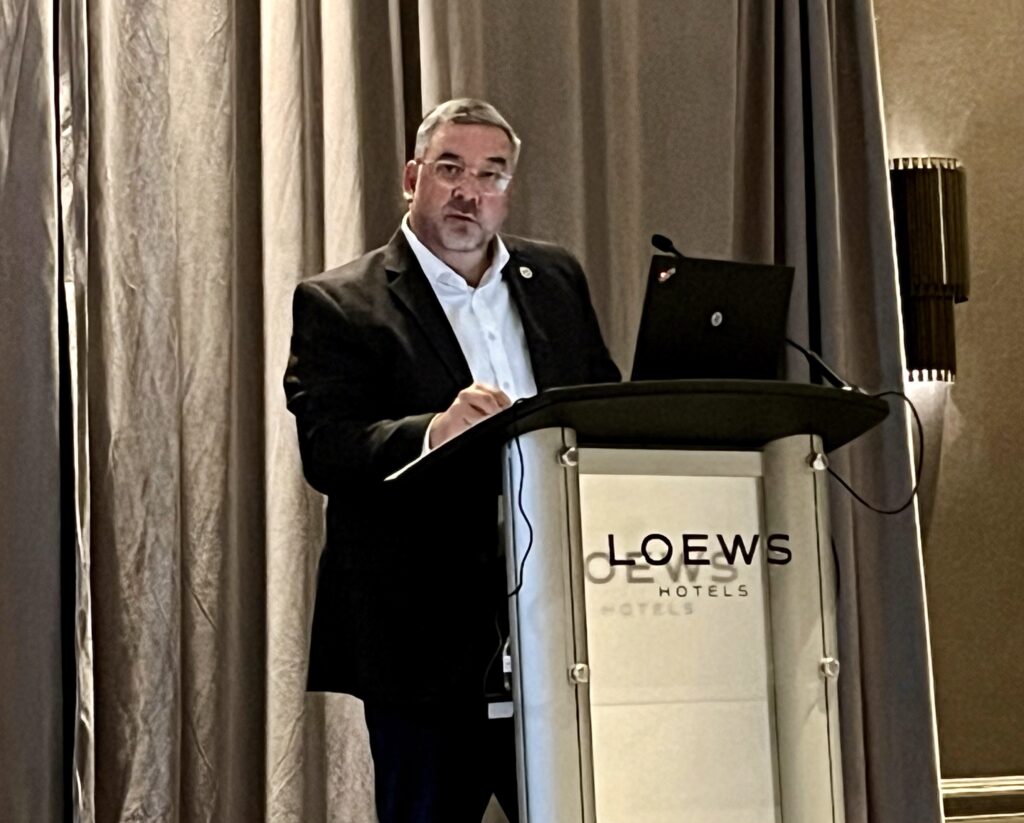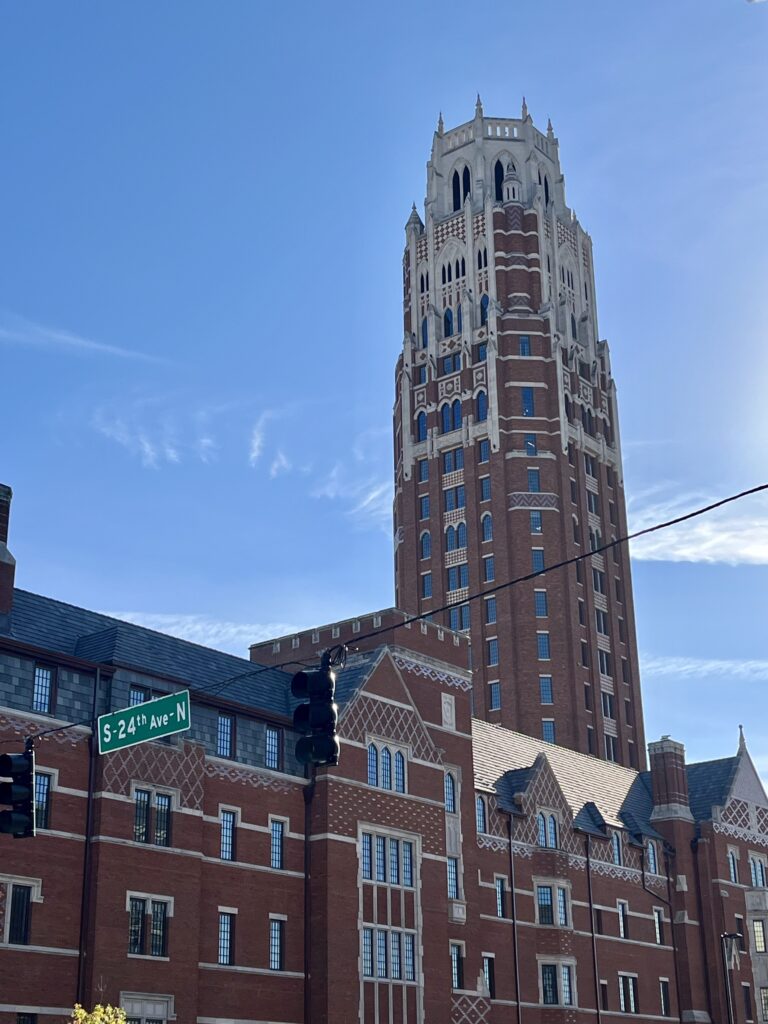By: Dawn Zoldi
In the opening moments of the Tennessee Drone and AAM Summit, one line from Commissioner Will Reid crystallized the state’s ambition: “We’re not just keeping up, we’re setting the pace for innovation in transportation.” That message, delivered alongside a video of Governor Bill Lee touting that “the future is here, and Tennessee is leading the way,” set the tone for a gathering that felt like a blueprint for a new contender on the leaderboard of mobility. Across keynotes from transportation leaders, legislators, economic developers and aeronautics experts, it became clear that Tennessee is deliberately architecting an ecosystem where drones and advanced air mobility (AAM) will be integrated into daily life, from rural health care to urban logistics and disaster response. It is also setting the stage to do this through targeted funding opportunities, workforce development programs and an open-arms approach to potential industry partners and collaborators.
Partnerships Make Progress Possible

Commissioner Reid has an “unwavering commitment to excellence in innovation.” Drones and AAM are a huge part of that. Drones, he explained, are “increasing the precision, reducing costs and improving employee safety and efficiency across the board,” especially for tasks such as bridge inspections, mapping and surveying storm damage across the state. As drones compress the time from data collection to decision, TDOT teams can focus on higher-value analysis and strategy, which Reid said will provide the essential groundwork as Tennessee “moves forward toward advanced air mobility.”
He emphasized that the state’s success depends on people and partnerships, as much as on platforms. “It’s our priority to align our people, our processes and the technology to integrate that into our transportation system,” he said. Meetings like the Summit, he noted, “develop relationships and build partnerships” across agencies, universities, local governments and industry.” For example, partnerships among agencies like TDOT, universities including Vanderbilt, Tennessee Tech and UT, and national entities like the FAA fuel the ecosystem. Each partnership, he noted, raises Tennessee’s national profile as an innovation leader.
Governor Bill Lee reinforced this top-down determination to shape “the future of transportation” for Tennessee. That type of backing matters. It shows the state’s drone and AAM will, in fact, be woven into core transportation policy, funding and organizational structures.
Three-Dimensional Transportation

On that note, Preston Elliott, TDOT’s Deputy Commissioner and Chief of the Bureau of Planning, extended the Governor and Commissioner’s vision into what he called “transportation in three dimensions.” He framed the traditional picture (think: roads, rail, walking, biking and transit) as just the first layer, airspace as the second and then third “digital” dimension that “brings all of these transportation modal aspects together,” through data and decision tools.
Elliott noted that most people in the room likely relied on some form of technology, such as navigation apps, calendars, routing tools, to get to the Summit. He suggested that advanced air mobility will similarly become an invisible but essential part of how Tennesseans move over the next 20–25 years.
He highlighted AAM’s potential for rural service, emergency response and freight logistics, particularly the “last mile or middle mile” where drones can “play a dramatic impact” in providing transportation services and goods to places that were “once were inaccessible.” He noted how drones have already proven “vital” for emergency response in East Tennessee and envisioned future integration where drones fly ahead of TDOT HELP trucks on rural interstates to provide “an advanced look” to first responders and traffic managers. On the passenger side, he pointed to emerging concepts like air taxis and other new modes that could move people “more efficiently in the future.” He said his team is committed to move this forward through strong policy frameworks and proactive land-use planning.
Disciplined Optimism And Public Trust
On the legislative side, State Representative Ed Butler, Vice Chair of the House Transportation Committee and an aviator himself, echoed this same future, which he said is already becoming reality in TN. “Imagine a time when the hum of electric aircraft overhead is as ordinary as the hum of truck engines…lifesaving medicines delivered by drones to rural clinics, and emergency responders using drones for search and rescue,” he said. “This is not science fiction. This is today’s world, and it’s just the beginning.”
This new reality will depend on public trust, he stressed. “If the public perceives these systems are invasive, intrusive or risky, the benefits will be limited and we will undermine the very progress that we seek,” he warned. For Butler, stakeholder engagement is “not a box to check, but a core discipline,” which requires public hearings, neighborhood meetings, transparent reporting and ongoing feedback as standard practice. When communities see tangible value, such as “reliable mail deliveries, shorter emergency response times, safer roads,” they will become “our champions and not our critics,” he said.
Butler also called for a mindset of “disciplined optimism.” His pledge was that, “We will not wait for perfect technology to begin delivering real world benefits. We will launch pilots. We will refine our rules. We will scale responsibly.” His metric for success is not the number of flights, but “how much faster we can reach health care, how we deliver medicines and reach those in need, how reliably goods reach small businesses and how many new jobs these advances create.” Summing up the ethos of Tennessee’s approach, Butler concluded: “The future we build is not one that technology alone dictates. It is one we design together.”
From Airports To AAM
If policy sets the guardrails, Tennessee’s aeronautics division builds the runway, both literally and figuratively, for drone and AAM integration. Aeronautics Director John-Paul Saalwaechter (JP) described his mission as “ensuring the safety, efficiency and future readiness of Tennessee’s air transportation system.”

The division supports statewide aviation system planning, helps airports modernize infrastructure and works to integrate technologies that make operations safer and more efficient. Increasingly, that means a focus on emerging technologies like drones and AAM. “We’re active. We’re not just watching this happen,” Saalwaechter said. He outlined efforts such as setting “regulatory and safety frameworks,” evaluating infrastructure needs, promoting education and workforce development and supporting operations that will enable drones and future air mobility systems “to scale safely and effectively across Tennessee.”
Saalwaechter underscored that Tennessee understands that drone and AAM growth “requires a skilled workforce, educational pipelines and research investment,” and that the state is “building these now.” For example, Aeronautics is working with the AOPA Foundation and the Department of Education to implement an aviation curriculum in schools and “create defined career pathways.” He highlighted a four-phase drone training program that spans preparation for the Part 107 exam through maintaining currency and flight condition proficiency, to institutionalize UAS skills within government operations.
The payoff is already visible across a wide range of use cases: airport inspections, digital construction, rating and staging stations and community-level initiatives like the Johnson City–Kingsport–Bristol area’s work “to safely integrate drones into local airspace.” Tennessee is also exploring drone delivery in health care, “connecting patients to critical medical supplies faster and more efficiently,” and using aerial data to “connect communities, strengthen existing infrastructure, and even identify opportunities to address rural access challenges like food and health care deserts,” he said.
And Manufacturing To Mobility R&D

Braden Stover, Chief Policy Area for the Department of Economic and Community Development, has a mission to “recruit new businesses to the state.” He has already helped Tennessee build a formidable manufacturing base and now has taken a strategic pivot toward research, development and innovation projects, including in drones and AAM.
To operationalize that shift, Tennessee established an Office of Innovation within ECD, which Stone described as a visible commitment to working with partners like Vanderbilt and Oak Ridge National Laboratory and using their research strength “as an incentive, as a recruitment tool for companies that are looking to be in the research and development space.” The Iris Fund, a 25 million dollar program, “focused on how we as a state can support projects that are industry led, industry driven but that are looking for a research partner to help them move forward their growing needs,” is central to this effort.
The concept is straightforward but powerful. ECD seeks to match industry based in Tennessee with in-state research assets, such as universities, national labs and applied research organizations, to keep drone and AAM R&D rooted in Tennessee, rather than exported to other tech hubs.
And so there’s even more money. A complementary 20 million dollar federal match fund allows Tennessee to help its universities and labs compete more effectively for federal grants by offering state match dollars. According to Stover, “The state believes in what we’re doing” and continues to make applications more competitive. He pointed to a recent win where a company chose to locate on Vanderbilt’s campus, partnering directly with faculty and students. This is exactly the type of embedded, ecosystem-style R&D presence the Office of Innovation seeks to replicate across the state.
Stone directly connected the dots between economic development and AAM. ECD has already dipped its toes into AAM through the “TenGo” (Transportation Growth Opportunities) grant program. It has supported projects with Whisper Aero in Crossville and Bell in Northeast Tennessee as early “feelers” into the air mobility space. Those experiences, combined with collaboration on grants with TDOT and others, “opened our eyes to the opportunity in advanced air mobility and all the things that come along with that,” he said.
One of the most intriguing plays is in southern middle Tennessee, Stone said, where the state owns roughly 1,800 acres near an area with strong aerospace and defense connections, including proximity to Huntsville and Nashville. ECD has been “trying to figure out how we can market that, how we utilize that investment,” and is now looking at ways to work with partners to “recruit companies there and kind of create an ecosystem” around AAM. Stone compared the vision to what Tennessee already has in nuclear energy at Oak Ridge, where a national lab and a cluster of specialized companies have created a dense innovation corridor. “Once you get the flywheel going, that’s when things really take off,” he said.
A Model for National Leadership
Taken together, the keynotes and opening remarks at the Tennessee Drone and AAM Summit revealed a state that has moved well beyond pilot projects and press releases and into the hard work of creating a true drone and AAM launchpad.
Tennessee continues to actively align transportation policy, aeronautics planning, economic development tools, funding and educational pipelines around a concrete vision: an integrated, three-dimensional transportation system where drones and AAM support its citizens, while fostering economic growth.
Importantly, the Summit’s key speakers returned repeatedly to the single idea that Tennessee’s progress is the result of teamwork across state lines, sectors and communities. The language about this from state leaders was intentional and confident. “We’re becoming a national innovation hub in Tennessee,” Commissioner Reid declared. This is backed by evidence of partnerships with North Dakota’s Northern Plains UAS Test Site, the FAA, universities and local governments to prepare for beyond visual line of sight (BVLOS) operations and broader drone deployment.
This vision will come to life through partnerships and policy. “As a proud member of this team…the relationship that we have with each of you…helps us advance these innovations in our state. And as the governor said, lead the way,” said Deputy Commissioner Elliott.
The proof is in the pudding, as they say. Tennessee continues to sprout new rural air mobility routes, resilient supply chains, smarter cities and economic lift for previously underserved communities. By bridging technology, people and purpose, the state stands ready to lead the pack.
The national spotlight now set firmly on the Volunteer State as the place where cohesive vision meets action. If it continues to execute on its ambitious strategy by scaling its drone program, seeding AAM clusters, investing in talent and keeping public trust at the center, Tennessee will not simply join the national conversation about uncrewed systems and new mobility. It will, as the Summit’s opening line promised, surely set the pace.

